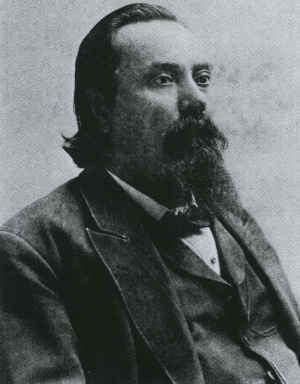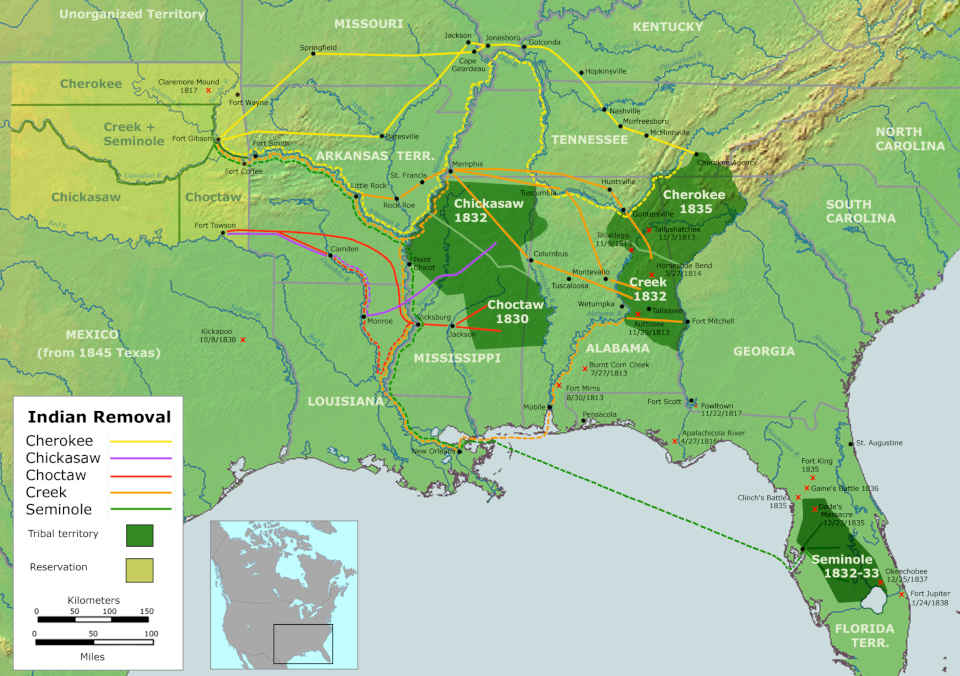Choctaw Potters
"It is with considerable diffidence that I attempt to address the American people, knowing and feeling sensibly my incompetency; and believing that your highly and well improved minds would not be well entertained by the address of a Choctaw. But having determined to emigrate west of the Mississippi River this fall, I have thought proper in bidding you farewell to make a few remarks expressive of my views, and the feelings that actuate me on the subject of our removal ... We as Choctaws rather chose to suffer and be free, than live under the degrading influence of laws, which our voice could not be heard in their formation." -- George W. Harkins, Choctaw Chief writing in 1831: George W. Harkins to the American People

George W. Harkins, Choctaw Chief
President Andrew Jackson pushed the Indian Removal Act through Congress in 1830. The Indian Removal Act broke every treaty the US Government had ever signed with the Cherokee, Muskogee-Creek, Choctaw, Seminole and Chickasaw tribes. They were rounded up and shipped west, beyond the bounds of most "American" settlements at the time. What happened on that journey is the story of the Trail of Tears.
The Choctaw were the first tribe to agree to be moved. They had been living peacefully in the area of what is now Alabama and Mississippi but in their dealings with the European/American invaders, they saw the violence that was coming and they were aware of laws being created to legitimize and further that violence. They made an agreement to accept government assistance and leave voluntarily.
The tribe was gathered into two main groups, one at what is now Memphis, the other at what is now Vicksburg. The plan was to start moving west on the first of November, 1831. That year a nasty winter moved in early. No one was prepared for it.
The group in Memphis started west in wagons but in the bad weather, the roads and rivers flooded quickly. They were then moved onto steamboats to take them up the Arkansas River to their new homes in Indian Territory. The steamboats only made it 60 miles, to the Arkansas Post.
There the temperature dropped and the river clogged with ice. For weeks the people were each given one turnip, a handful of boiled corn and two cups of heated water per day. Finally, the government sent 40 wagons from Little Rock to carry them overland to Little Rock. Once in Little Rock, one of the Choctaw chiefs was quoted by a news reporter to have said, "This was a trail of tears and death."
The group in Vicksburg had it worse. They started west about the same time but they were led by a truly incompetent white American guide. He led them in circles in the vast New Providence swamps for months during a very nasty winter. Many people died there.
Almost 17,000 Choctaw began the move to Indian Territory. There's no official count but between 2,500 and 6,000 of them died on the way. Between 5,000 and 6,000 Choctaws stayed behind in Mississippi, subject to harassment, intimidation and years of legal conflict. Their properties were burned, their fences and crops destroyed, many of them spent years in jail on various trumped up charges. Many had their land stolen from underneath them by white swindlers in the county courthouse. And in most respects, the Choctaw were better educated and more civilized than the folks of other races and ethnicities who flooded in to replace them.
Between 1831 and 1837, the government of Andrew Jackson forced the removal of about 46,000 Native Americans from the southeastern states and opened some 25 million acres of land for settlement, mostly by whites.
The Indian Territory the tribes were sent to was land set aside by Congress and guaranteed to them in perpetuity. Then in 1906 Congress reneged on those official agreements, too. They forced open much of Indian Territory for white settlers. A few years later Indian Territory became the Great State of Oklahoma.
"In the whole scene there was an air of ruin and destruction, something which betrayed a final and irrevocable adieu; one couldn't watch without feeling one's heart wrung. The Indians were tranquil, but sombre and taciturn. There was one who could speak English and of whom I asked why the Chactas were leaving their country. 'To be free,' he answered, could never get any other reason out of him. We ... watch the expulsion ... of one of the most celebrated and ancient American peoples." -- Alexis de Tocqueville, 1831, writing in Democracy in America
The majority of the Choctaw live in Oklahoma and while many are excellent artists, very few seem to produce traditional pottery. The only one whose work has passed by me is Randy Chitto.
Map of the Trails of Tears courtesy of Wikipedia userid Nikater
